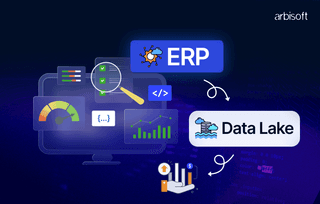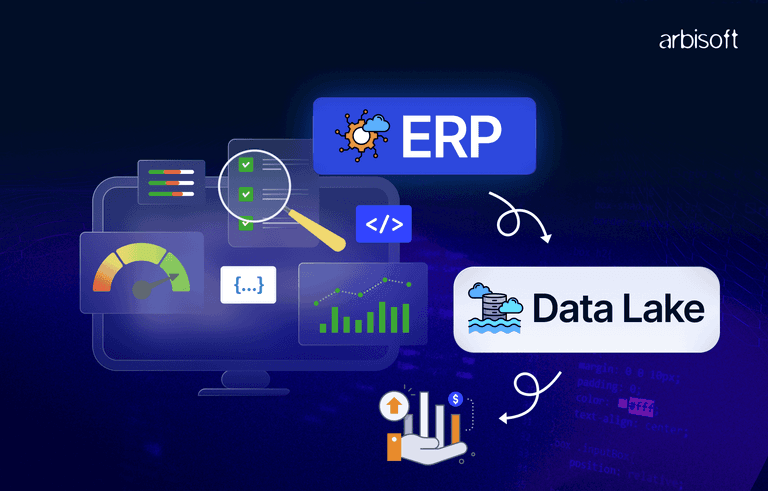We put excellence, value and quality above all - and it shows




A Technology Partnership That Goes Beyond Code

“Arbisoft has been my most trusted technology partner for now over 15 years. Arbisoft has very unique methods of recruiting and training, and the results demonstrate that. They have great teams, great positive attitudes and great communication.”
Unlock the Power of Learning: Choosing the Right Open-Source LMS

The global open-source market is anticipated to reach over $1 trillion by 2027, with a projected growth rate of 19.8% annually. This significant growth reflects the increasing adoption of open-source solutions across various industries, including the eLearning sector where open-source LMS platforms are gaining traction due to their cost-effectiveness, flexibility, and customization capabilities.
This guide equips you with the knowledge and tools to navigate the open-source LMS landscape with confidence. We'll break down key considerations, explore essential features, and empower you to select the perfect platform for your specific needs.
Understanding Your Needs
Before diving in, let’s try to understand who will be using the LMS, as it is crucial to know which is the right platform for your learners. Consider the following factors when assessing your audience. Talking about LMS, Edly is a comprehensive Learning Management System (LMS), offers support to a wide range of learners, making it easy to create engaging and effective courses for everyone.
1. Learner Demographics
Are you targeting tech-savvy millennials or a team less familiar with online learning? Understanding your audience's age, technical proficiency, and learning styles will influence how you design and deliver content.
2. Content Types
Will your LMS primarily house bite-sized video lessons, in-depth SCORM modules (standardized eLearning packages) requiring specific compliance, or assessments like quizzes and surveys?
3. Features in Focus
Do you need gamification features like badges and points to boost engagement? (very effective!) Is mobile access a must for on-the-go learning? Robust reporting for detailed analytics might be crucial to track progress and measure the effectiveness of your training programs.
4. Scalability for the Future
Consider your growth projections. Will the LMS accommodate a growing number of learners and an expanding content library as your training needs evolve?
Defining Open-Source LMS Features
A wide range of features are available on open-source LMS platforms to meet the needs of diverse learners. Let’s look at a breakdown of some essential functionalities.
1. Effortless Course Creation & Management
Look for user-friendly interfaces that allow you to upload various content types (documents, videos, quizzes) with ease for course creation. Organize them into structured courses and manage revisions efficiently.
2. Granular User Management & Roles
Assign distinct roles (administrator, instructor, learner) with appropriate access controls. This ensures a secure learning environment and streamlined course delivery.
3. Assessment & Evaluation Made Easy
Effective LMS platforms come equipped with tools for creating quizzes, tests, and surveys. Gauge learner comprehension, track progress, and identify areas where you can further enhance your training programs.
4. Actionable Reporting & Analytics
Unleash the power of data! Generate detailed reports on learner activity, performance, and progress. Use these insights to refine your training programs, personalize learning paths, and cater to individual learner needs.
5. Mobile Compatibility
Learning On-The-Go is the buzzword! Modern learners demand flexibility. Ensure your chosen LMS provides seamless accessibility on smartphones and tablets, empowering learners to access courses and complete training anytime, anywhere.
6. Social Learning & Collaboration
Discussion forums and group activities can spark interaction and peer-to-peer learning. Encourage knowledge sharing and collaboration to create a more engaging learning experience.
7. Gamification
Boost learner engagement with gamification! Badges, points, and leaderboards can transform learning into a game, making it more enjoyable and motivating for learners.
8. Compliance & Certification Support
Track course completion for regulatory requirements or industry certifications. This ensures your training programs meet specific standards.
Beyond the Features
While features are important, real user experiences can shed light on the practical advantages and disadvantages of different platforms. Look for reviews that highlight:
Strengths
Users often appreciate specific features, ease of use, or robust functionalities. For instance, a reviewer might rave about Moodle's intuitive interface or Sakai's powerful customization options.
Weaknesses
User pain points can reveal limitations or areas for improvement in certain platforms. Reading about challenges faced by others can help you avoid potential pitfalls.
Success Stories
Case studies showcasing how organizations implemented an open-source LMS to achieve their learning goals provide valuable insights. Learn from the experiences of others and benefit from their successes.
Installation, Configuration & Ongoing Maintenance
While open-source LMS platforms boast significant cost savings, they often require more technical expertise for installation and configuration compared to proprietary systems.
1. Installation
Most providers offer detailed installation guides. We won't delve into the nitty-gritty here, but a general roadmap outlining the installation process can be helpful.
2. Configuration
The level of customization you can achieve depends on your technical capabilities. Many platforms offer user-friendly interfaces for basic configuration, allowing you to tailor the LMS to your specific needs without needing to be a coding whiz.
3. Ongoing Maintenance
Security updates and addressing technical issues are crucial for a healthy LMS.
4. Support Options
Research available support options offered by the platform community or third-party vendors. Look for active forums, helpful documentation, and professional support plans if needed.
Want a quick and easy way to ensure your chosen LMS has all the must-have features?
Download our FREE Essential Features Checklist to choose an open-source LMS.

Does your chosen LMS have all the must-have features?
Download our list of Must-Have features for your open-source LMS

Tips for Achieving Success with Your Open-Source LMS
Selecting the right LMS is just the first step on your journey. Here are some best practices to ensure successful implementation.
a. Content Creation Strategies
- Bite-Sized Learning - Break down complex topics into manageable modules that are easier to digest and retain information.
- Multimedia - Incorporate a variety of multimedia elements like videos, images, and interactive activities to keep learners engaged and cater to different learning styles.
- Mobile-Friendly - Ensure your content is optimized for mobile devices. With the rise of mobile learning, learners expect to access courses from anywhere.
b. User Onboarding and Training
- Clear Navigation - Provide learners with clear instructions and tutorials on navigating the LMS platform. This will minimize confusion and ensure a smooth learning experience from the get-go.
- "Getting Started" Course - Consider offering a dedicated introductory course that familiarizes learners with the LMS interface, functionalities, and learning process.
c. Utilizing Reporting & Analytics
- Analyze Activity & Performance - Root into the data! Analyze learner activity and performance to identify areas for improvement in your training programs.
- Personalized Learning Paths - Use reports to personalize learning paths. Cater to individual learner needs by recommending relevant courses or adjusting content difficulty based on performance.
d. Building a Thriving Online Learning Community
- Spark Interaction with Forums - Discussion forums can be a powerful tool for knowledge sharing, peer support, and fostering a sense of community among learners.
- Group Activities & Gamification - Encourage social interaction and collaboration through group activities and gamification elements. This can boost learner engagement and motivation.
The Power of Open-Source LMS Awaits
Open-source LMS offers a compelling combination of powerful features, cost-effectiveness, and adaptability, making it an ideal complement to leading edtech services in today’s digital learning landscape. With the right platform and strategic implementation, you can unlock the full potential of open-source LMS to transform your learning and development programs and create a dynamic learning experience that engages, motivates, and empowers your learners.
























